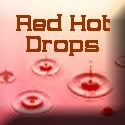Search Engine Ranking - General Tips
Labels: SEO Tips 0 commentsExcerpt from Montetizers.com:
Following, are some general SEO tips that usually work for all search engines. Most of them include HTML editing, so it would be best if you knew the basics of HTML before trying to optimize your site.
Text versus images - because of the headache text and font causes for websites (because of the different browsers that have different fonts, MAC and PC differences, monitor sizes, etc.), a lot of web-designers fall in the trap of using images containing the text instead of pure formatted text inside the HTML code. Although it may provide a quick solution to layout problems, this practice causes two other major disadvantages, namely increased sized and the inability of search engines to look through your site (search engines look inside the HTML code for text, they cannot scan pictures). Therefore, it's always better to work a little harder on finding the right text size and font, rather than using images.
Titles - whenever going through a page, search engines look at its title first, so make sure the page's title contains the keywords people will most likely look for when searching. For example if your site is for a travel company, make sure you have words like "travel", "vacation", "holiday", etc. Designers have a tendency to title their pages in an extremely simple and inefficient manner, like Homepage, Contact, Shop, etc. Titles should contain whole sentences with a high keyword density, giving the search engine more "tips" on finding your site. To insert a title to a web page, edit the HTML with any editor (Notepad would do), and place the title between the title tags in the head of the web page.
Keywords - Keywords are clues that search engines process and then rank your site according to keyword density. Keywords should be used both inside the site and in the head section of the HTML code. To place keywords in the code, you need to insert the following tag inside the site's section: . For example, if you have built a site for a company that sells cars, you should place common words like "car", "ABS", "TDI", "4WD", "car prices", "low car prices", "Mercedes", "Audi", etc. Also, seeing how you can place as many keywords as you like, you should place misspelled words in the Meta tag, in case the person searching misspelled. For the above example, you could add "Mercedece", "Audy", etc. It might sound funny but you have no idea how many people misspell their searches and if you are able to think ahead on how people misspell words, you are bound to be the only (or one of the few) site owner that has a link on Google for those words, therefore dramatically increasing the chance for your site to get accessed.
The words in the Meta tags do not show up on a site. Also try to use the correct keywords in a high density throughout your site. The more instances of a keyword a search engine finds while scanning your site, the better the rank. If your page is optimized for the right keywords, the number of total visitors can double or triple. This comes as a complementary measure to take, besides a good internal and external linking structure, in order to improve the chances of your site being found on Google. Many websites fail exactly in this field, as their keywords don't intersect with the searches of their potential visitors. The text within the body of your page - the visible text contained between the tag and the tag, should be roughly somewhere between 300 and 500 words, in which your key phrase should be used a couple of times and keywords should have a density of about 5% of the text.
Invisible misspelled keywords (not recommended, but it's a widely used method - take notice that it could be dangerous to use cloaking text techniques, as some search engines may flag, or even ban your site for this) - Another tricky way to use misspelled keywords on your site, is to put all the wrong variants of your keywords in a couple of rows somewhere on your site, where it's not likely to be seen at all (above the disclaimer, or somewhere at the top, just above the header), and change their color to the exact color of the background (if you have a picture as the background, you can't use this method). The problem would be that if a visitor selects that text by mistake, he would see a few rows off misspelled words on your site, which undoubtedly gives a minus to your professional image. For example, I'm going to write a piece of white text here, try to select it: &133; this doesn't look very nice, doesn't it?. Now, depending on the browser you use, those words were highlighted and you can see their content, or they are permanently hidden and you can't see what I wrote, it seems like you just selected blanks. For those curious readers that can't see it, I wrote ": &133; this doesn't look very nice, doesn't it?..". Again I do not recommend using this technique as it might be risky, but it's as important to know what you SHOULDN'T do, as it is to know what you SHOULD do, sometimes.
Headers - Search Engines (and Google especially) take headers into consideration when ranking your site. The header tags go from to and are used to more easily split your website's text into fragments. The biggest size is for , decreasing to smaller headers when using the following tags, until which is the smallest. You have a higher chance of rating higher if you use your site's keywords or key phrases inside headers, especially the first two header tags and .
Meta Robot tags - a rarely used meta tag (or at least you can rarely find information about it in articles like this one), this meta tag "tells" a specific robot to index your page, somewhat increasing the probability and speed at which you will get indexed. Since adding it involves little additional effort, you might as well do it while you add the other tags. The tag shows a search engine the way to index your page and follow the links on it. In case you want to do the opposite and not let search bots crawl your site, replace "index" with "noindex", or if you don't want to let them follow your links, replace "follow" with "nofollow".
Other HTML SEO tricks - There are a few more HTML tricks that send your site up the ranks. Using frames and pop-ups increase your rating on many search engines. The code for these HTML objects is quite long and complicated to explain here (as it is not the purpose of the article), but you can easily create framesets and pop-ups using a web-design program like Macromedia DreamWeaver or Microsoft FrontPage. Another tip would be the use of "alt" tags on images. The "alt" tag is the text you see sometimes when holding your mouse over a picture (most of the times a description of the picture). To use the tag, find the image source of apicture(e.g.: . This should make a small box, containing the "picture description" line, appear over the image if you hover the mouse above it. Search engines also look for these alt lines to configure your rank.
. This should make a small box, containing the "picture description" line, appear over the image if you hover the mouse above it. Search engines also look for these alt lines to configure your rank.














0 comments: to “ Search Engine Ranking - General Tips ”
Post a Comment